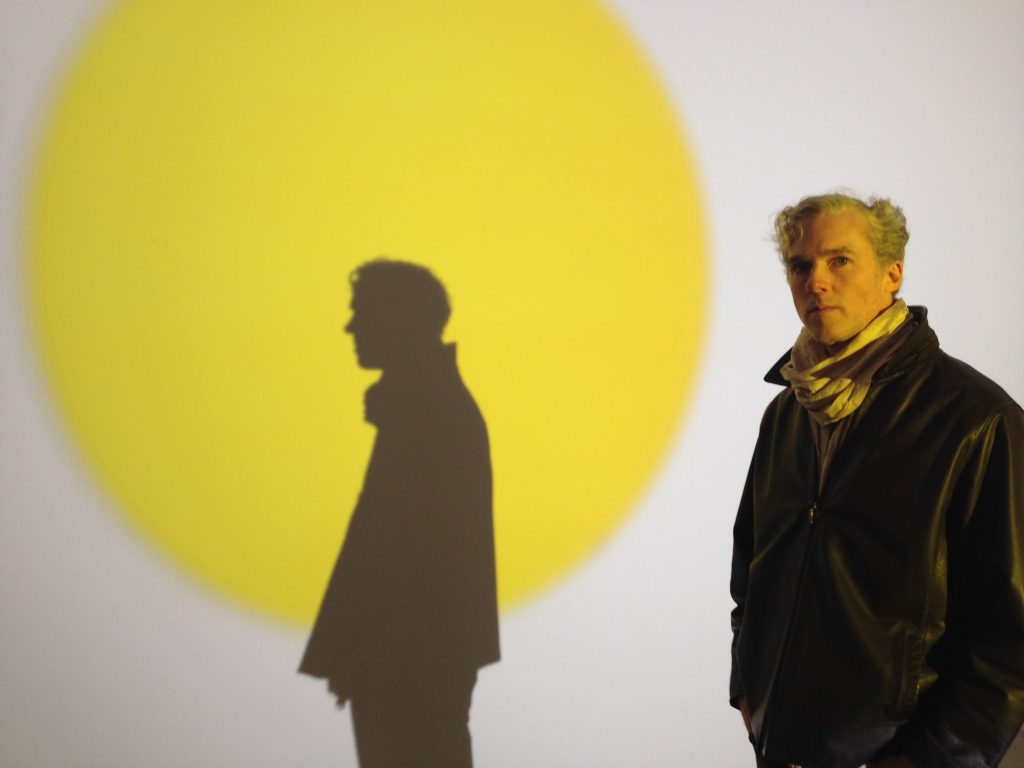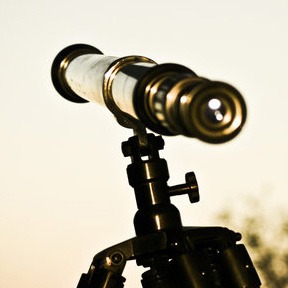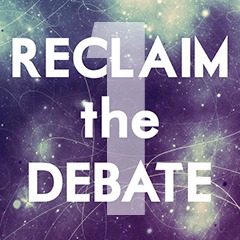The Loop Trip How Two Kids on Acid Stumbled onto the Theory of Everything
by Psychedelic Frontier on May 22, 2018 No Comments
Art by Leslie McAllister
Music stabilizes the self against the wind of what otherwise seems to be a universe full of frighteningly random events.
We nodded our heads to the opening bars and both started singing along when the lyrics began. Our eyes widened with mutual recognition that our day’s journey was beginning, and that this particular song was perfectly, almost impossibly, synched with that realization. After we got through the first verse without missing a beat, Jim laughed and yelled, “No way! You’ve got a Deacon Blues loop!” What was amazing to me was not the coincidence that we both had a history with the song, but that he referred to it as a “loop.” He didn’t even have to explain. “Yes! Loops! Of course! I totally get it!”
The “Deacon Blues loop.” We had both been around this track before. As we sang along, it became apparent in our shared facial gestures that many of the movements and inflections we associated with various parts of the melody were not only common to us both, but had been thoroughly rehearsed over hundreds of repetitions. We watched each other’s eyes in amazement as we anticipated the lyrics together. We mimed along in near unison, clearly both knowing the song inside and out and having performed it alone to ourselves on countless occasions. We wriggled our fingers, eyebrows, and facial muscles intricately to the music, articulating each note of the saxophone solo with delicate care.
[pullquotecenter]The more we looked around us, the more everything seemed to be playing out in one of these loops. The waiter at the cafe was in his “waiter loop,” constantly repeating the stock phrases that are part of his job. We saw other people running their jogger loop, their cop loop, their mail carrier loop.[/pullquotecenter]I remember wondering at the time if that was part of what the human attraction to music was based on: sharing in the recognizability of coming sounds and rhythms, and the religious-style reassurance it gives us to participate together in those pattern re-creations. It stabilizes the self against the wind of what otherwise seems to be a universe full of frighteningly random events. The structure becomes a way of processing and sharing our unexplainable feelings about things like the importance of memory. And if that is the sensation we look for in music, then perhaps on some level we are trying for that experience in our other patterns as well. The little repetitive in-joke we can’t help establishing with our regular coffee server; the arbitrary creation of repetitive rituals in the way we wash our hair, or the order in which we get dressed. Somehow it was clear without a word that Jim and I were both thinking about all these things as we engaged in our little performance.
Quickly, the concept of the “loop” became a way of discussing everything around us. For the duration of that trip, and for the coming days, we noticed and pointed out loops everywhere. A loop, like a loop of audio track or film footage, could be anything that would replay itself over and over. The more we looked around us, the more everything seemed to be playing out in one of these loops. Someone who went by in their car was in a “driving loop,” in the process of reenacting the familiar set of physical gestures that go along with driving their car. The waiter at the cafe was in his “waiter loop,” constantly repeating the stock phrases that are part of his job. We saw other people running their jogger loop, their cop loop, their mail carrier loop.
A loop was like a program, or a routine. A story that has become more repetitive with each telling, like that loop you run about the time you went to Hawaii. Or an action that always takes place in a similar pattern, like the loop on which you walk your dog every morning. Even tiny gestures and personality quirks, like a word you always pronounce with a certain accent, or a smirk you lifted from a movie star, could be seen as loops. You might run your “James Bond loop” when you order a drink, or your “Marilyn Monroe loop” when you toss your hair. There were loops of various sizes and lengths. For example, your “lawn-mowing loop” might only recur for an hour or so, a few times a year; but if you’re running the “home mortgage loop,” it might take forty years to finish its cycle, and its repetitions might only reveal themselves when observed in the behavior of others or across the generations.
[pullquoteleft]I imagined that our behavioral and conceptual loops were actual, physical cycles of motion, like orbits or cells, except that they weren’t tangible to our limited senses as three-dimensional beings.[/pullquoteleft]In most situations, there were multiple loops running on different tracks at the same time. Perhaps not all of them would be audible or visible at once, but various combinations of them might be present at any moment, contributing to the composition of a given dynamic. You might see someone outside an office building on their cigarette break, running their “businessman loop” at the same time as their “nicotine junky loop.” A father playing catch in the backyard with his son might be running his “family man loop” along with his “Joe Montana loop” and his “flannel shirt loop.” The woman who owns the bicycle shop might be running her “mechanic loop” concurrently with her “entrepreneur loop” and her “cycling enthusiast loop” when an old favorite song comes on the radio and suddenly stirs all of those other components of her self-conception back into her long-forgotten “Duran Duran loop.”
Jim and I didn’t have too much familiarity with the language of actual science, but we gradually began to imagine that this “loop theory” was a rough approximation of how everything worked. Water was simply what happened when nature was running her hydrogen and oxygen loops in a certain balance with each other. The seasons were merely loops of recurring natural themes and weather features. Over several days of discussion, we eventually fleshed it out into an all-encompassing explanation of reality. We saw loops on every plane of existence. The orbits of planets, moons, and comets were loops, as were the paths of electrons around a nucleus, or blood through a cardiovascular system. Everything from the biggest to the smallest, from the physical to the conceptual, could be discussed as a loop. Even our human lives were nothing more than loops that ran in eighty or ninety-year cycles.
During these discussions, I was filling a notebook with barely comprehensible drawings and madly scrawled notes. I babbled on endlessly about everything from the donut-making loop to the religion loop. I don’t remember why, but during one of our sessions I decided that all these loops were somehow held together by a massive system of multiple dimensions across which they all interlocked and made each other possible. I imagined that our behavioral and conceptual loops were also actual, physical cycles of motion, like orbits or cells, except that they weren’t tangible to our limited senses as three-dimensional beings. I began to obsess on the idea that since it required a being operating in three-dimensional space to perceive all the parameters of a two-dimensional world, it therefore must require a being operating in four dimensions to observe all the parameters of our own human reality.
[pullquotecenter]In three dimensions, your perspective allows you to regard something two-dimensional as somewhat trivial. I imagined that if you were living in four dimensions, perhaps like a god or a ghost, that the things happening strictly in a three-dimensional world could likewise seem of a reduced importance. [/pullquotecenter]I reasoned that if two dimensions were taking place within the context of a third, then our three must be taking place within the context of a fourth. But then the four must only be fully perceptible within the context of a fifth and so on, with new dimensions required in order to make possible the parameters of each lower dimension. For reasons that I don’t remember and didn’t record, I eventually settled on the idea that there must be twelve, or maybe thirteen, dimensions in total. (Remember that my notes were made by a teenager on drugs, and not a researcher or a physicist.) I also decided, for equally mysterious reasons, that some of these dimensions were physically existing realms made of what we only consider “concepts” in this one. I had heard in the popular media that ‘time’ had at some point been thought of as a dimension, and in my mind it made sense that things like ‘truth,’ or ‘consciousness,’ or even ‘love’ could be dimensions as well.
I was playing with the notion of perspective and its conspicuous way of straddling the physical and conceptual. After all, what were conceptual terrains except more layers of perspective within which other realities could reside as smaller perspectives? When you are existing in three dimensions, your perspective allows you to regard something two-dimensional as somewhat trivial. And I imagined that if you were living in four dimensions, perhaps like a god or a ghost, that the things happening strictly in a three-dimensional world could likewise seem of a reduced importance. So maybe when you’re operating from a higher conceptual perspective, even the events in the fourth or fifth dimension can shrink in relevance. I can imagine by this point you might be rolling your eyes a little, but bear with me. I was a twenty-year-old high school drop-out trying to collapse space, time, matter, and the perceptions of the human mind into a single, unified theory while I tripped my face off on LSD. And I was just as surprised as you might be to find out that I wasn’t even too far off.
If these loops were the smallest, most fundamental ingredients of reality, then what would it mean to split the space between them? Would it open some kind of worm-hole that would allow us to pass across time via some higher-dimensional universe? Would it just rip open time and space? Would we destroy our dimension?
The next time I went home to visit my parents, I eagerly dug through the notebooks in my old closet and found the one from that week with Jim. I was amazed by how much my notes had in common with the theories discussed by Kaku. One of the drawings in particular caught my eye. It was of two loops meeting to form an infinity symbol. My notes described how plunging into the space where the loops met would actually create some kind of infinity in which time travel would be possible. With Kaku’s book fresh in mind, I wondered if what I’d been trying to describe might have been a bit like splitting an atom to create energy. Only if these loops (like super strings) were the smallest, most fundamental ingredients of reality, then what would it mean to split the space between them? Would it open some kind of worm-hole type thing that would allow us to pass across time via some higher-dimensional universe? Would it just rip open time and space? What would happen if we somehow tore a super string? Would we destroy our dimension? Or collapse it into another? Is that the kind of shit the people in Switzerland with the big particle smasher are concerned about? As you can see, I haven’t exactly kept up with my reading about contemporary physics. But you’d have a hard time convincing me that I wasn’t kind of onto something there.
My first reaction was to assume that I must have been previously exposed to these ideas and absorbed them somehow, but I couldn’t for the life of me figure out how or when. I had left high school after freshman year, well before physics came up, and I had never taken an active interest in the sciences. Was it possible that a few doses of LSD could open up a layman’s mind to the cutting edge of theoretical physics in mere hours, with no prior training or preparation? And indeed, why not? The physical properties of our universe are available to all of us all the time, and there surely must be multiple paths on which we might awaken ourselves to understanding them. Whatever the reality is of the infinite tiny particles surrounding everything, or of the infinite behavioral patterns swirling through our daily lives, we all have an immediate access to that reality. We can all stumble onto interesting thoughts about what is going on in the stars, and what our existence is made of. The physicists might be the ones we have tasked with finding explanations for these thoughts, but the world is full of many kinds of explorers. Whether we are scientists, poets, philosophers, or just two kids in a little apartment somewhere, listening to Steely Dan and getting off on the patterns in the carpet, let’s not forget that we are all still working on the same equation.
![]()

Jason Stoneking is an American poet, essayist, and performing artist based primarily in Paris. He has authored two volumes of poetry and four collections of essays. He has also written screenplays and rock music, moonlighted as a chess commentator, and staged numerous performance art pieces. He has been performing his art and writing for more than 25 years, at venues ranging from the main stage at Lollapalooza to the Pont Neuf in Paris and the rooftops of Cairo. He is currently working on a series of unique, handwritten, bespoke books. He is awestruck by the sky, but skeptical of authority.
Liked this post? Subscribe to my RSS feed to get much more!











